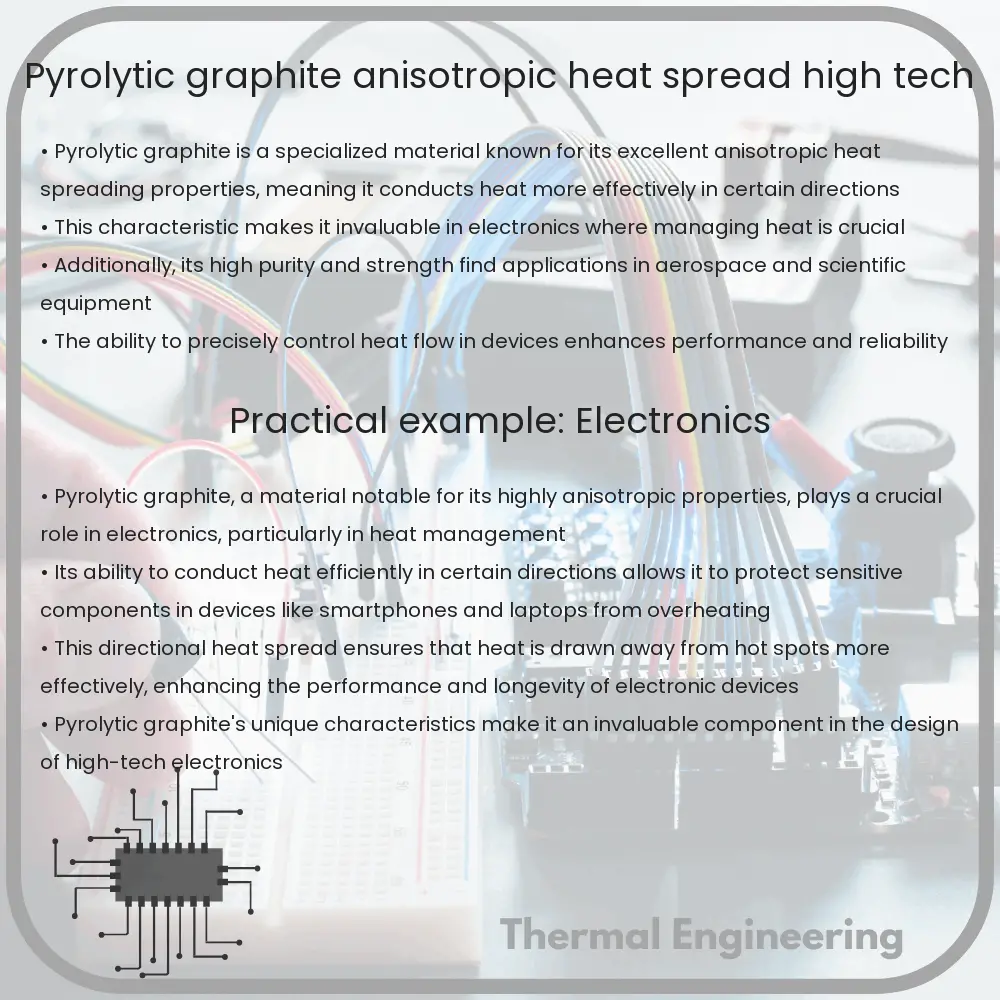Learn about pyrolytic graphite, a material known for its high thermal conductivity and unique anisotropic properties.

Understanding Pyrolytic Graphite
Pyrolytic graphite, a synthetic material known for its outstanding thermal conductivity and unique anisotropic properties, stands out in a range of high-tech applications. Created by the chemical vapor deposition of hydrocarbon gases at high temperatures, this material exhibits some of the most extreme anisotropic properties in materials engineering, making it invaluable in fields like electronics, aerospace, and thermodynamic research.
Formation and Structure
Pyrolytic graphite is produced through a process called chemical vapor deposition (CVD). In this process, hydrocarbon gas is decomposed at high temperatures in a vacuum on a substrate, allowing the graphite to be deposited layer by layer. This controlled process results in a material with highly oriented graphite crystals. The structure is what gives pyrolytic graphite its unique properties, including its exceptional anisotropy in thermal and electrical conductivities.
Anisotropic Heat Spread
The anisotropic nature of pyrolytic graphite refers to its directional dependency of physical properties. Thermal conductivity in pyrolytic graphite is significantly higher in the plane parallel to the deposition layer (about 1500-2000 W/m*K), compared to its perpendicular direction (about 5-8 W/m*K), making it one of the most effective conductors of heat in-plane and a good insulator out-of-plane.
This distinct thermal behavior can be exploited in applications requiring efficient heat dissipation across a surface, such as in electronic devices where managing heat is crucial for performance and longevity. The high thermal conductivity helps to spread and dissipate heat generated by electronic components quickly and efficiently over the surface of the graphite.
Applications in High-Tech Industries
- Electronics Cooling: Pyrolytic graphite sheets are used to manage heat in various electronic devices, including smartphones, LEDs, and high-power transistors. Its ability to conduct heat away from hot spots helps in enhancing the performance and durability of these devices.
- Aerospace: Its high thermal stability and strength-to-weight ratio make pyrolytic graphite an ideal component in spacecraft and satellite structures, where extreme temperature fluctuations are common.
- Scientific Instruments: Used in equipment such as mass spectrometers and ultra-high vacuum furnaces, pyrolytic graphite’s properties ensure precision and efficiency in environments where thermal stability is required.
Challenges and Future Prospects
Despite its advantages, working with pyrolytic graphite can be challenging due to its brittleness and difficulty in machining. Recent developments, however, focus on composite materials that incorporate pyrolytic graphite to utilize its thermal properties while overcoming its structural limitations.
As technologies evolve, and the need for efficient thermal management continues to grow, pyrolytic graphite will likely play an increasingly important role in future engineering solutions. Research into improving its properties and integrating it with other materials could lead to even broader applications and effectiveness in high-performance spaces.
Indeed, pyrolytic graphite is a material that exemplifies how advancements in materials engineering can drive technology forward, offering solutions that were once thought impossible and opening up new avenues in design and application.